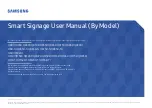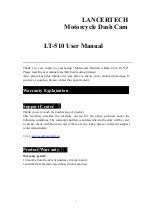
33
Examples
8.5.2
8.5.2.1 Sequencer without Machine Cycle
Sequencer
Start
A
A
B
B
C
C
The figure above shows an example for a fully automated sequencer with three sets of
parameters (A,B and C). Here the repeat counter (n) is set for (A=5), (B=3), (C=2) and the
loop counter (m) has a value of 2.
When the sequencer is started, with or without an external event, the camera will record
the pictures using the sets of parameters A, B and C (which constitutes a sequence).
After that, the sequence is started once again, followed by a stop of the sequencer - in this
case the parameters are maintained.
8.5.2.2 Sequencer Controlled by Machine Steps (trigger)
A
A
B
B
C
C
Trigger
Sequencer
Start
The figure above shows an example for a half-automated sequencer with three sets of
parameters (A,B and C) from the previous example. The frame counter (z) is set to 2. This
means the camera records two pictures after an incoming
trigger signal.
Capability Characteristics of
8.5.3
Baumer-GAPI Sequencer Module
up to 128 sets of parameters
▪
up to 4 billion loop passes
▪
up to 4 billion repetitions of sets of parameters
▪
up to 4 billion images per
▪
trigger event
free running mode without initial
▪
trigger
◄ Figure 31
Example for a fully auto
-
mated sequencer.
◄ Figure 32
Example for a half-auto
-
mated sequencer.
Trigger Delay:
The trigger delay is a
flexible user-defined delay
between the given trigger
impulse and the image cap-
ture. The delay time can
be set between 0.0 μsec
and 2.0 sec with a stepsize
of 1 μsec. In the case of
multiple triggers during the
delay the triggers will be
stored and delayed, too.
The buffer is able to store
up to 512 trigger
signals during the delay.
Your benefits:
No need for a perfect
▪
alignment of an external
trigger sensor
Different objects can be
▪
captured without hardware
changes
















































